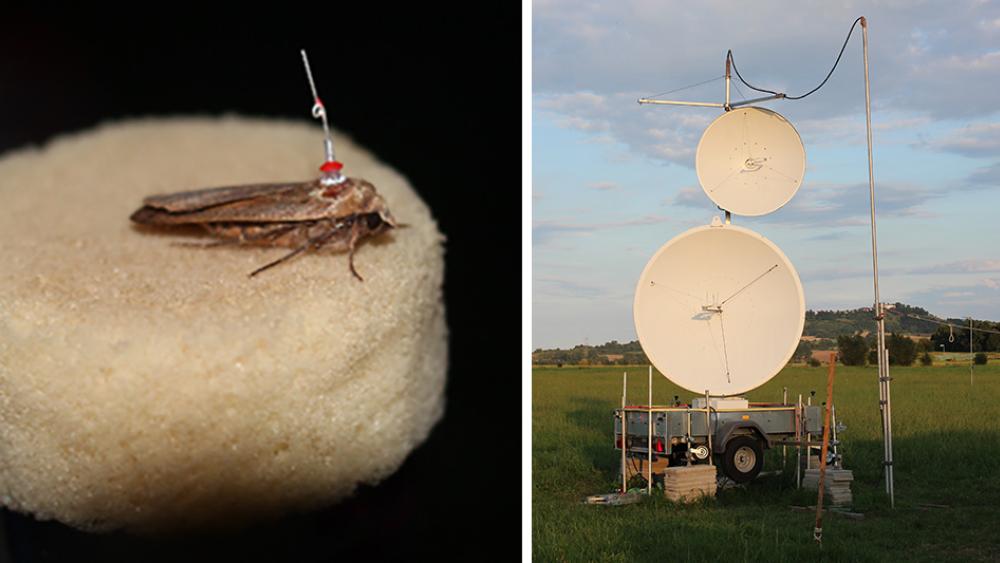
The flight paths of individual moths were tracked using radar. On the left a large yellow underwing (Noctua pronuba) with a transponder. | Photo: Jacqueline Degen, Universität Würzburg
Scientists have identified light pollution as one of the drivers of the dramatic insect decline of the past years: many nocturnal insects fly to artificial light sources and circle around them incessantly. There they become easy prey for bats and other predators or eventually fall to the ground exhausted and die.
A new study now shows that the behaviour of moths changes not only in the cone of light from street lamps, but also outside the illuminated area. The research team, led by Dr Jacqueline Degen (Julius-Maximilians-Universität (JMU) Würzburg), has now shown by radar tracking of individual moths that only four per cent of the animals outside the illuminated area were attracted by street lights. The others did not fly to the artificial light sources. However, their flight paths were much more curved than normal. However, the curvature of the flight path is an important parameter for the orientation of the animals. IGB researcher Dr Franz Hölker and his team have already demonstrated a barrier effect of street lights in an earlier article.
“Street lights can therefore influence the flight behaviour of moths long before they approach the cone of light. This underlines the need to significantly reduce spill light by means of directional and shielded luminaires and thus mitigate the influence on flight behaviour and a potetial barrier effect”, explained IGB researcher Dr Franz Hölker, one of the authors of the study. The effect of a new insect-friendly luminaire design has already been presented in another study by Franz Hölker research group.
Fascinating method: Flight tracking using a Radar System
The experiments took place at a radar system in Großseelheim near Marburg in Germany. The harmonic radar is currently the only radar system that can track small insects over several hundred metres. The research group observed the flight behaviour of a total of 95 moths up to one kilometre away from the release point, which was surrounded by a total of six street lamps at a distance of 85 metres.
In order to record the insects by radar, a transponder had to be attached to each individual moth. This small antenna is 10.5 milligrams light and twelve millimetres long. It does not change the flight behaviour of the moths in any way – the researchers had previously clarified this in elaborate control experiments.
The text is based on a press release by Julius-Maximilians-Universität (JMU) Würzburg.





